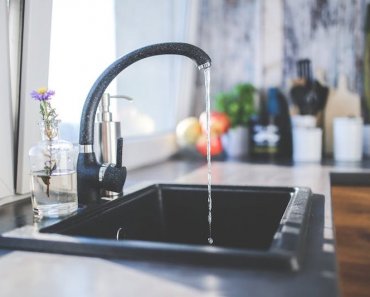A team of researchers at the University of Waterloo in Canada has developed an artificial intelligence (AI) technology to help guard our water supplies from toxins.
“It’s critical to have running water, even if we have to boil it, for basic hygiene,” Monica Emelko, a professor of civil and environmental engineering at Waterloo and co-author of the study, said in a statement. “If you don’t have running water, people start to get sick.”
Every year, due to many factors like the rising temperature and overuse of agricultural fertilizers, water sources around the country are increasingly being covered in musty green thick layers of toxic algae, threatening families and wildlife.
Four years ago, for example, half a million residents around Lake Erie, the largest freshwater reserve on the planet, woke up to a “Do Not Drink” warning from their city governments. They were left without both drinking and bathing water for several days.
What’s wrong with current methods?
Although it is crucial to continuously identify and monitor harmful microorganisms in water to maintain water safety, current testing methods are either too time-consuming, if manual, or too expensive, if automated.
“This process is very time-consuming to perform manually by human experts with tens of thousands to millions of microorganisms in a water sample, and is also restricted to a small number of certified laboratories who can do this,” said Alex Wong, a professor of systems design engineering at Waterloo and co-author of the study.
But now, the Waterloo team has developed an AI system that can automatically identify and count toxic microorganisms both quickly and at a low cost.
“The ability to do all this automatically in a matter of seconds can enable water facilities to perform screenings directly on-site in a frequent and rapid manner to keep water safe,” said Wong.
The research paper is published in the journal Scientific Reports.
The team also includes adjunct engineering professor Chao Jin, doctoral student Jason Deglint and research associate Maria Mesquita.
The system
The team’s AI system uses software in combination with a microscope to inexpensively and automatically analyze water samples for algae cells in about one to two hours, including confirmation of results by a human analyst.
According to Wong, instead of the current method that can only analyze a small area looking at just a couple of microorganisms at a time, his team’s system identifies and counts millions of microorganisms from larger water sample volumes in a matter of seconds, using a standard microscope.
Since testing could be done much more quickly and frequently, the researchers believe that their system would provide an early warning of problems.
“We need to protect our water supplies,” Monica Emelko, a professor of civil and environmental engineering and member of the Water Institute at Waterloo, said in a statement. “This tool will arm us with a sentinel system, a more rapid indication when they are threatened.”
Wong believes their system is not only as accurate as human expert counts for cell quantification, but also more accurate than fluorometric probes, another alternative method used in place of human experts.
“The exciting piece is that we’ve shown testing utilizing AI can be done quickly and well,” Emelko said in a statement. “Now it’s time to work through all the possible scenarios and optimize the technology.”
Make AI count
The researchers will continue improving the system so it could one day continuously monitor water flowing through a microscope for a wide range of contaminants and microorganisms.
“A next step would be to explore and investigate its applicability to a much wider range of microorganisms and in a larger variety of scenarios of natural water sources where there are different contaminants,” said Wong.
“At the end of the day, such rigorous studies are needed to ensure that any developed technology can see widespread deployment in real-life scenarios.”
The researchers estimate it may take two to three years to refine a fully commercial sample testing system for use in labs or in-house at treatment plants.
The technology to provide continuous monitoring could be three to four years away.
“This brings our research into a high-impact area,” Wong said in a statement. “Helping to ensure safe water through widespread deployment of this technology would be one of the great ways to really make AI count.”



